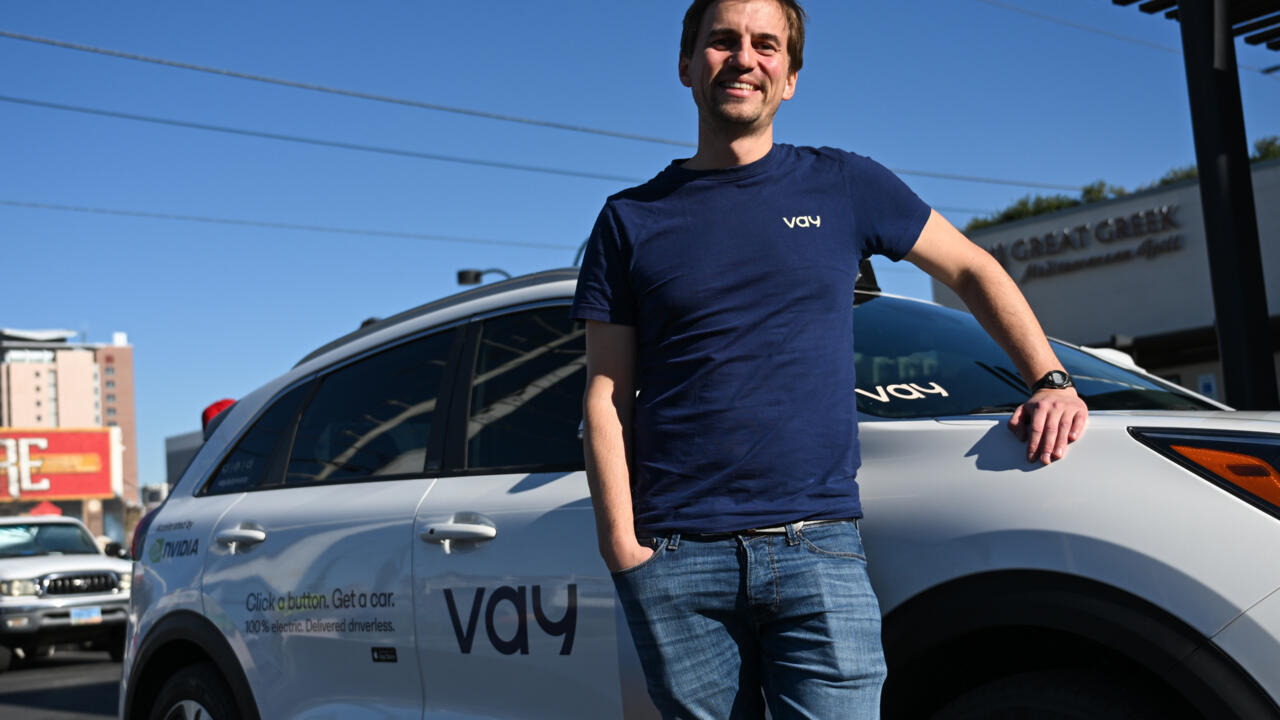One of a number of emerging players aiming to disrupt road transportation, the seven-year-old company is built around remote driving, where a human is very much present, though sitting in an office using TV monitors to guide the car.
Over the last year, riders in Las Vegas have been able to test drive Vay, and the company was demonstrating its technology ahead of the Consumer Electronics Show (CES), the world’s most important tech show.
Thomas von der Ohe, chief executive and co-founder of Vay, said his was a lower-cost approach “that has nothing to do with autonomous driving.”
Von der Ohe, who previously worked at Zoox, the Amazon-owned autonomous driving company, said that unlike autonomous driving companies, Vay doesn’t have to “run massive amounts of simulations” to be safe.
“Our core safety principle is that the (human driver) can make the decision,” he said.
And unlike a Tesla or Waymo, there is no dream at Vay of one day shedding the steering wheel, which twists and turns during rides as if maneuvered by the Invisible Man.
The remote driving approach also employs fairly inexpensive camera technology, which costs a fraction of the envelope-pushing Lidar sensing systems favored by leading autonomous companies.
A demonstration of the remote driving technology showed someone watching three screens — which included live imagery from front, side and rear-view cameras — as they operated a system similar to at-home racing simulators, with a steering wheel and pedals.
Vay is offering rides for half the price of Uber or Lyft. Von der Ohe hopes to reach profitability in the next year or two, depending on how quickly the company can scale.






